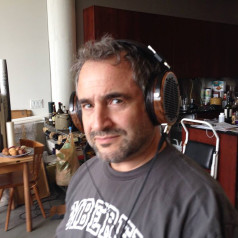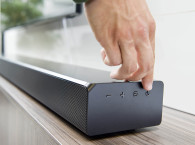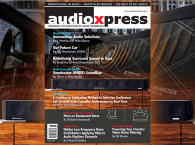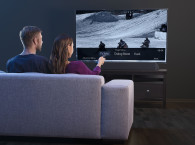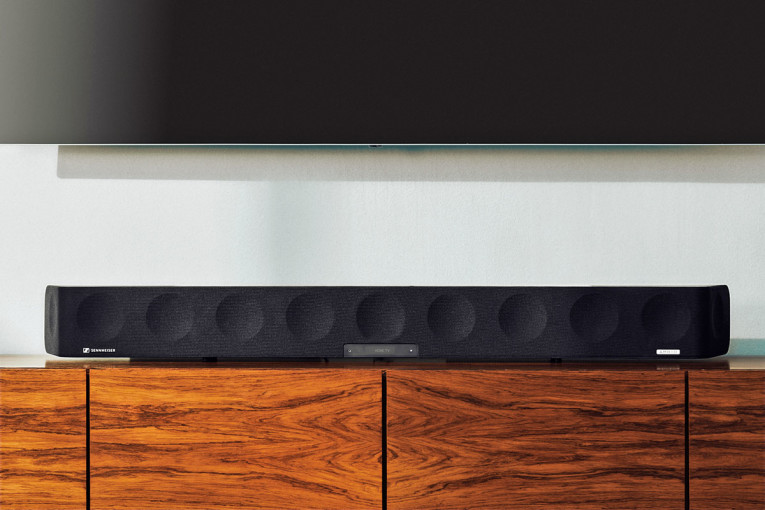
Why purchase a soundbar rather than the more common Home Theater in a Box (HTIB)? For one, clutter. Spousal approval often rests on a clean and unobtrusive install. Having speakers everywhere and wires to trip over, crush, or get mangled makes for a less than ideal installation.
Another factor is the IKEA Syndrome, where the family takes home a shiny new item only to find its assembly and/or installation to be a profound puzzle. Frustration ensues. Over a decade ago, when HTIBs were new to many households, a UK study cited by Philips Research revealed that 47% of consumers failed to set up their home theater systems correctly, often omitting a speaker, and consequently experiencing inferior sound. I doubt that outcome has changed. Simple and streamlined are two very strong arguments in favor of a soundbar.
Basic two or three channel examples can be had for an average of $220. They will be about 33" in length, and weigh about 5 lbs. When it comes to soundbars, increased weight usually correlates to the number of drivers and size of their magnet structures. More drivers and bigger magnets usually mean improved low-frequency output and/or reduced distortion.
Entry-level products support Dolby Digital, the home theater equivalent of very low data rate MP3, and the front channels only at that. For a slight upcharge, fancier models support some semblance of true surround, with separate rear channel speakers but then you’re verging on HTIB territory. Separate subwoofers are also common, since a diminutive and lightweight bar isn’t going to cut it, bass-wise. In this price range, distortion is high, frequency response is narrow, and so is the overall subjective sound for both bandwidth and soundstaging. One questionable advantage, even at this price point, is that many offerings are “hearable,” with Amazon or Google tech built in.
Just say, “Alexa, this soundbar is anemic!” For a major performance boost, some soundbars take on more weight, more drivers, and more powerful amplifiers to widen the frequency response and decrease distortion while increasing the channel count and sound pressure before clipping. For this category, prepare to add a cool thousand dollars to the equation. Higher-quality wireless soundbars, Bowers & Wilkins’ Formation fall into this category, are also usually more than $1,000. The Formation subwoofer is also $1,000, which doubles the price but enhances the bottom half octave.


AMBEO
Enter AMBEO, Sennheiser’s answer to soundbars for upscale video enthusiasts. Better known in the consumer audio community for its headphones, Sennheiser is a 70-year-old company manufacturing a wide range of professional microphones, pro and consumer headphones, and studio monitors. For its first foray into the already crowded soundbar market, Sennheiser wanted to make a statement, a rather substantial statement.
We are talking about a lifestyle product so separate cabinets, wires, and anything that smacks of clutter is a negative. While a traditional soundbar can provide the center, left, and right, how does one deliver those enveloping rear channels without unsightly infrastructure? In a word: beamforming.
Long used for radar and, more recently, larger audio installations particularly corporate conferencing systems and sound reinforcement, this implementation of phased transducer arrays combined with DSP enables a designer to create directivity through constructive and destructive interference. A phased array sidesteps lenses and horns to control directivity and, unlike a physical waveguide, beamforming is “steerable” in that DSP can alter the phase and amplitude of drivers to optimize directivity for a particular listening position.
Tabletop hearables also use beamforming in combination with a microphone array to direct their “attention” to a particular talker in a room. I first encountered a beamforming soundbar at the 2018 AXPONA show, where my geek buddy Mark Waldrep was demoing Comhear’s diminutive YARRA 3DX personal soundbar. Well before that, Philips published in 2007 and was granted a patent for audio beamforming technology in 2012. Five years later, Sony showed its HT-ST5000 beamforming soundbar at the 2017 CES, and JBL now offers a slim version with wireless subwoofer for $500.
Because our hearing spans so many octaves, it’s a challenge to achieve wideband beamforming. At the high end, you need closely spaced transducers for those short wavelengths. At lower frequencies, you need a sizable array. The usual approach, to keep the cost and physical size reasonable, is to deploy many inexpensive drivers and throw a goodly amount of DSP at the problem. In the case of Sennheiser’s bar, there are 13 drivers total, of three varieties, starting with six 4” long throw woofers taken from their famed Neumann speaker division.
For high-frequency duties, five 1" dome tweeters with fairly deep horns fit the bill, with three in front and two on the extreme left and right, plus two 3.5" drivers on top for height channels. Each transducer is driven from its own amplifier. As you would expect, they are all Class D with a combined power capability of 500 W. Although expecting a vented approach to aid in bass extension, the AMBEO soundbar is an acoustic suspension design for better low-frequency transient response. There are two woofers in each chamber, while the tweeters also have their own enclosures.
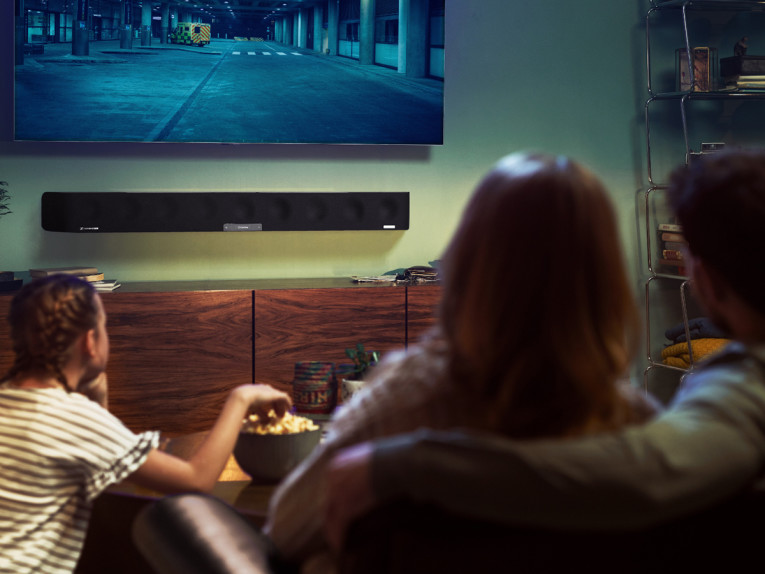
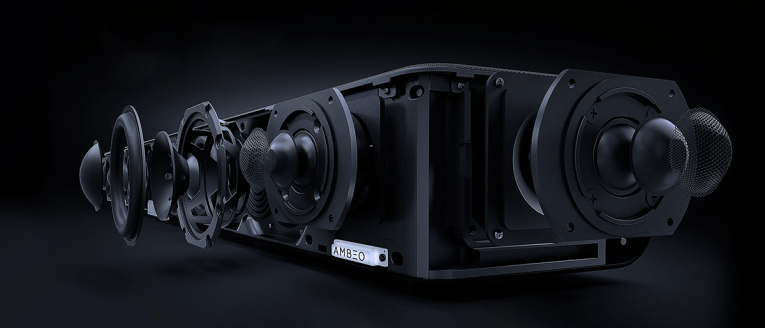
The Setup
Upon unboxing, I thought I’d better check for firmware updates. The documentation that came with the product mentioned Sennheiser’s Smart Control app for iOS and Android, so I went to the App Store and grabbed a copy. With the app on my iPhone, connected via Bluetooth and on the same Wi-Fi network, it showed a System Settings section in Preferences that includes a “Search for update” choice. Sure enough, my AMBEO needed just that. Though the app itself gave little or no user feedback, the soundbar’s own bright and highly legible front panel OLED display showed that an update was in progress.
With that process completed, we almost settled in for listening. I say we since my whole family got into the act at one time or another. At this point, I digress regarding Nvidia Shield TV Pro, about which the youngsters in our family were salivating.
During the Audio Engineering Society (AES) New York conference last October, audioXpress editor J. Martins introduced me to Robert Bleidt, Fraunhofer USA’s Division General Manager of Audio & Multimedia. Bleidt mentioned that he could provide content that would nicely demonstrate the capabilities of the Sennheiser product.
Fraunhofer was a development partner with Sennheiser, working on implementation and product refinement. Bleidt agreed to send me a piece of hardware to play back Fraunhofer’s MPEG-H demo content and, after a fair bit of red tape, a Nvidia Shield TV Pro Home Media Server arrived at the house. Ani Maria, my in-house gaming expert, helped me set up the sleek little black box and, we finally did settle in to listen.
I first arranged the unit in our living room, a decidedly asymmetrical arrangement. Though an optional wall mounting bracket is available for the AMBEO Soundbar, it was not included in the demo package so I simply placed the product on the horizontal surface nearest to the television.
The living room’s left wall is 7’ from the sweet spot while the right wall is more than 2.5’ farther. The product comes equipped with a standalone measuring microphone mounted on a 28” wand, making it very easy to position the mic at ear level. After a couple of calibration passes followed by listening, I found that placing the microphone about 3” in front of where my ears would normally be positioned produced the most satisfying results.

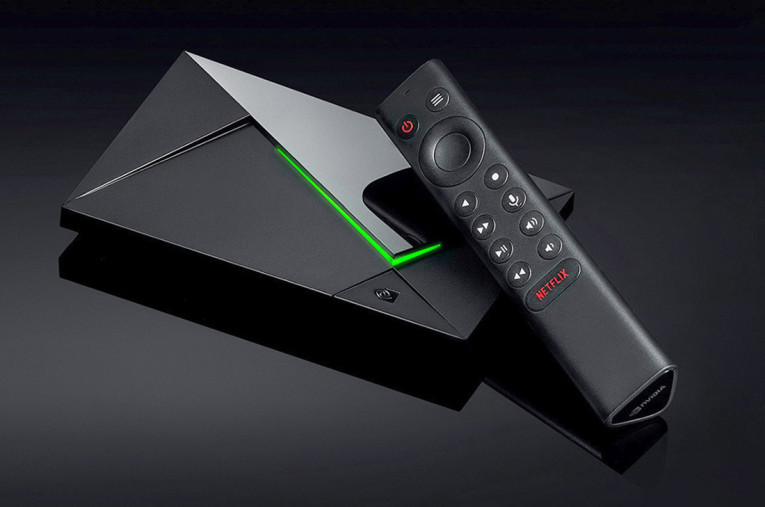
AMBEO’s Modes
Once the very simple calibration process was completed, we broke out the streaming content and Blu-ray movies. In that environment, I heard a surprisingly rich envelopment, though discrete localization from behind was lacking as one would expect from discrete ITU-positioned rear-channel speakers. To be fair, my ears were a mere 11” from the back wall so, not much opportunity for AMBEO to properly bounce that rear information.
The product has five listening modes or “profiles.” These are more than voicing settings in that they combine timbral shifts with changes to the AMBEO algorithm. Subjectively, the Neutral setting is, as you would expect—balanced and uncolored. When compared to my other hi–fi tabletop speaker, Naim’s Mu-so Qb, the overall voicing was similar, though the Qb has a more extended high end and sounds a good bit punchier.
The second listening mode is Music, which adds a slight upper low-frequency lift. Sports mode adds a slight high-frequency lift to Music’s low-frequency boost, while News mode exhibits a slight upper low-frequency suppression plus that high-frequency lift. Finally, Movie mode offers a pronounced low-frequency lift along with enhanced L-R steering. Think of it as Fun mode, as it was the most popular mode for the family regardless of what flavor of entertainment we were consuming.
The app has one control that I found particularly useful: the three position AMBEO intensity control. Depending on content and number of listeners, we found that we could always find an appropriate and satisfying setting that would spread the soundfield around to every listener or concentrate it for solo viewing.
The AMBEO Soundbar also has a Night mode, which can be enabled for almost any listening mode. As one would expect from the name, Night Mode rolls off low frequencies, and seems to dial in dynamic compression about a rotation point. Along with the low-frequency suppression to keep the material from traveling too far through the house, this setting seems to reduce the overall dynamic range while lowering the perceived Loudness.
A “Dolby Dialog Normalizer” can be activated or deactivated in the Smart Control app. According to the user manual, “...this function makes dialogs (sic) easier to understand by reducing loud music / background noise and amplifying softer dialog audio.” Dolby DRC or “Dynamic Range Compression” is also included and, again, controllable by the app. “This function compresses the dynamics of the audio signal, thus changing differences from soft to loud passages.” Setting choices include fully off with no change to dynamic range, “Auto” with automatic reduction of dynamics, “Normal” with slight compression of dynamics, and “Heavy” with brute force compression. If that’s not enough, a four band EQ is also included in the app, so extensive personalization is possible.


The Remote
As with any lifestyle product, a remote is expected and, in this case, included. Unlike its companion bar, the all-metal remote is small, with a satisfying heft and easy-to-understand layout. The bar also has a five-color Status LED that visually confirms many of the remote’s functions. All of those functions of the remote are replicated by the app, along with configuration controls and three extra features. One is the above mentioned ±10 dB, four band graphic equalizer. The second is a “subwoofer” enable/disable switch for an optional external sub, while the third is a three-position intensity setting for AMBEO. With those three controls, the user is able to modify and store the five presets to taste.
The stored configurations replace the factory setting until the user resets any individual mode. The soundbar has an “ECO” standby mode, and you can set the mode via the app. Booting the soundbar takes quite a bit longer when ECO standby mode is enabled.

The Soundstage
With AMBEO off, the soundstage collapses to a conventional stereo presentation. Imaging is reasonable as long as you’re on the speaker’s centerline, while timbre is neutral if a bit bass-shy. Considering that the outer, front-facing speakers are only 39” apart and the typical listening distance is 5’ to 8’, in stereo mode the speaker subtends a very narrow angle. You have to sit very close to the speaker to hear “normal” stereo imaging in stereo mode.
Enabling AMBEO mode drastically enlarges the perceived acoustical environment, a bit like the difference between what a dipole paints compared to a box loudspeaker. The algorithm jacks up the interchannel difference information while activating the upward-facing Atmos height speakers along with the beamforming. In short: bigger, wetter, and much mo’ better. The timbre also shifts, adding a dram of upper bass heft. Overall, mucho más excitement. Movie mode plus AMBEO is crazy good fun. We pretty much kept AMBEO enabled all the time, since going back to plain old stereo is a colossal letdown.
Soundbar Doubles as a Hot Spot
The soundbar is an 802.11 hot spot. Used for Google Home setup, Chromecast moves configuration data to the soundbar during user configuration. The AMBEO Soundbar also includes wired Ethernet, a digital optical input, an analog in on RCA, three HDMI inputs and one eARC-enable HDMI output. Bluetooth Low Energy (BLE) plus NFC connects the smart phone app to the soundbar. A USB spigot is dedicated to firmware updates. The soundbar and remote have a multi-function button that allows you to control playback of a Bluetooth source. Two DSPs are hidden in the soundbar, one for up to 10 channels of Atmos & MPEG-H decoding, and a second for frequency contouring.
For stereo content and with AMBEO off, a downmix to stereo is produced; front left and right tweeters plus all six woofers. Enabling AMBEO initiates upmixing from stereo. As Max Voigt, Product Manager for Sennheiser’s CE Division described it, “You can hear what immersive sound can bring.” Truly an understatement, I came to love AMBEO!

Overall Impressions
For a more typical listening experience, we moved the bar to our basement rumpus room, where my discreet 5.1 system usually serves yeoman audio duties. Our downstairs has a 7’ popcorn ceiling, while the TV room’s rear wall is largely covered by a floor-to-ceiling glass front bookcase. Placed in a symmetrical position on the centerline of the room, with the rear wall some 8’ from the listening position and the bar 6’ in front of the listener, I expected better rear and height localization but was again a bit disappointed.
Voight was not surprised, telling me that there is only so much that can be done with virtual speakers. As he said, it is “...a disadvantage of not having dedicated rear speakers.” Given that caveat, the overall perceived envelopment was outstanding, bested in the horizontal plane only by a discreet ITU setup.
The AMBEO Soundbar adds a somewhat vague but satisfying vertical dimension to the surround experience. No, you most likely will not hear a “Voice of God” channel as you would in an Atmos theater, but you will be swathed in a rich quarter sphere of clean, exciting sound.
One aspect of the AMBEO Soundbar experience that needs to be emphasized is that this is made by Sennheiser. This is a Teutonic product, built by engineers who usually create top-shelf audio equipment. A characteristically thorough design process has produced voicing and performance that reflects the company’s 75-year history of producing products without compromise or euphonious distortion.
When asked what the development group was most proud of, Voight focused on project administration and the result of a distributed team effort. “We were able to manage the complexity, to get a really fine product into the market.” He stressed the “really great design” that the acoustical team produced, and also the cooperative interaction between Sennheiser and Fraunhofer, especially for AMBEO.
With three years of development and over a million lines of code, Sennheiser’s AMBEO Soundbar brings well over a half century of combined wisdom and craft to the home theater market. The result is a category-defining product, with a wealth of useful features and outstanding dynamics and crowd-pleasing excitement along with exceptional clarity and linearity.
The Upside: exceptional fidelity, legendary build quality, peerless spatialization of mono and stereo sources, versatile input and format support, and the all-in-one form factor. The Downside: relatively high cost, no hard “rear” localization, and the mic placement critical to optimal setup. aX

Sennheiser AMBEO Soundbar
$2,499.95
https://en-us.sennheiser.com/ambeo-soundbar
Resources
Sennheiser AMBEO: https://audioxpress.com/tags/AMBEO
Fraunhofer IIS: www.iis.fraunhofer.de/audio
S. Meltzer, “MPEG-H Audio Brings New Dimensions to TV Sound,” audioXpress
MPEG-H Audio: www.iis.fraunhofer.de/mpeg-h | www.mpegh.com
R. Bleidt and J. Martins, “Considerations for the MPEG-H Audio Standard,” audioXpress
M. Klasco, “A Look at Soundbar Audio Signal Processing,” audioXpress
J. Martins, “Object-Based Audio and Sound Reproduction," audioXpress
About the Author
O.A. Masciarotte has spent more than 30 years immersed in the tech space, working on facilitation, optimization, marketing, and product development for clients worldwide. As an author and speaker, he enjoys informing folks about technological best practices. More information is available at seneschal.net and othermunday.com.
This article was originally published in audioXpress, June 2020.



